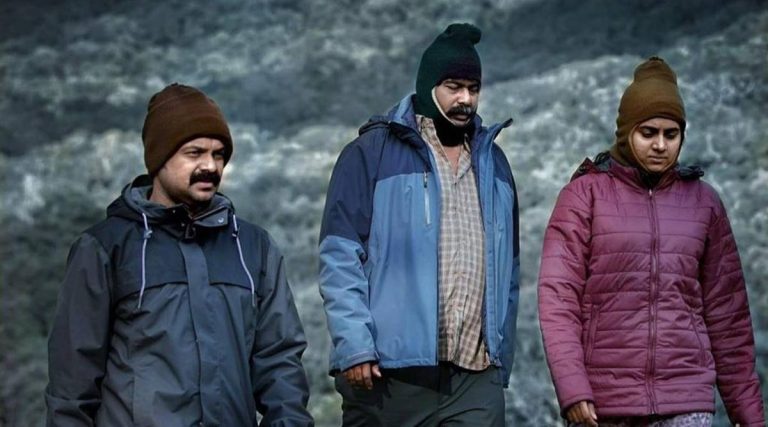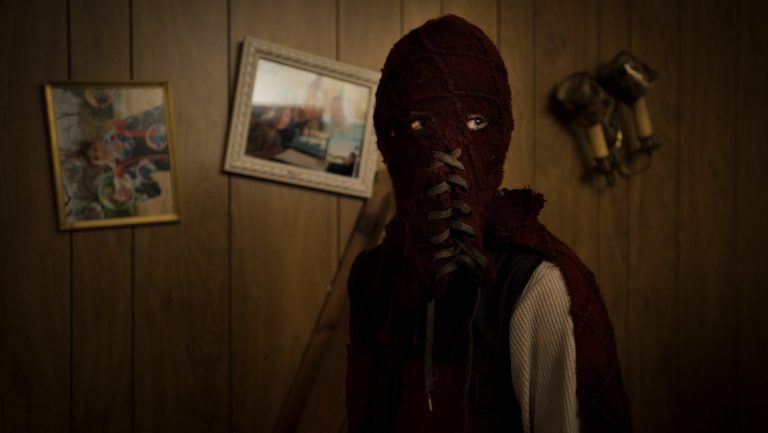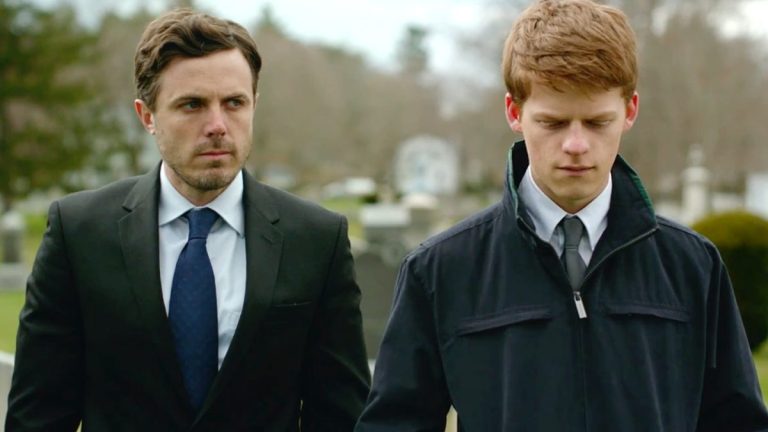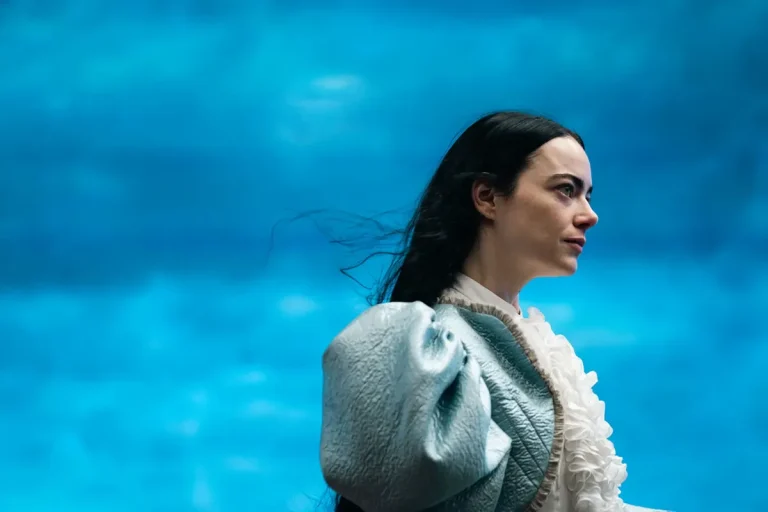In “Cold War” (Original title: Zimna wojna, 2018), Paweł Pawlikowski crafts not merely a love story but a fragmented cartography of longing, both political and personal, etched upon the female body. The film’s cold monochrome frames breathe in a Europe cleaved by ideology yet united by its ache for permanence, and within this terrain, Zula drifts like a specter – part woman, part memory, part myth. She crosses countries, tongues, and lovers, yet never arrives anywhere; her movement becomes less an act of choice than a symptom of exile.
Pawlikowski traces Zula’s journey across borders that are both visible and invisible. Her identity wavers between what can be seen and what can only be imagined, between the camera’s attempt to capture her and her instinct to stay undefined. The lens trails her as though documenting a nation in flux, transforming her body into a map of post-war Europe’s fractured consciousness. As the story bends back on itself, a quiet question begins to take shape. Was Zula ever there to begin with? What if she exists only within the architecture of Wiktor’s yearning, a cinematic hallucination conjured by the male gaze’s need to domesticate loss? In that case, her wandering becomes doubly tragic. She is displaced by history and slowly dissolved within a man’s nostalgia, her agency replaced by recollection.
Cold War thus performs a haunting symphony between desire and disappearance, geography and gender, where to love a woman is to mythologise her, and to mythologize her is to erase her. Zula becomes Europe itself – beautiful, broken, remembered only through the ruins of men who tried to claim her. To read Cold War through Zula is to read Europe itself as a restless feminine presence – one that is desired, disciplined, and displaced. The film opens amid the ruins of post-war Poland, a space that feels suspended between reconstruction and amnesia.
Zula never belongs anywhere. She moves through the world like a rumor caught between languages, bodies, and nations, her identity constantly redrawn by the borders she crosses. We see her “female” body become a geography of displacement, a terrain where history, desire, and exile converge. Pawlikowski situates her in a Europe that is still recovering from the fractures of World War II, and in doing so, transforms her into both a symptom and a metaphor of that dislocation.
The Poland she leaves behind feels like an ideological theatre, where national folklore dances to the rhythm of state propaganda. The West she enters offers freedom in words yet delivers only alienation in life. Her journey between these worlds is full of repetition and devoid of progress. She moves through new spaces, yet each turns into another form of confinement. Her body is both vessel and victim of these transitions: touched, translated, traded, and looked at, she becomes the connective tissue binding together a divided continent, yet remains perpetually in exile from herself.
Pawlikowski’s camera mirrors this instability. It never fully claims her, never grants her narrative centrality. Zula is filmed from across rooms, through windows, from behind, always slightly displaced within the frame, as though the lens itself were complicit in her marginality. The film’s crisp black-and-white palette, too, participates in this cartographic logic. It erases difference even as it accentuates separation, turning Zula’s wandering into a monochrome ritual of erasure and recollection. Her migrations – Poland to Berlin, Berlin to Paris, and back again – become less geographical than ontological, enacting a cycle of belonging and unbelonging that exposes how womanhood, within patriarchal and political orders alike, is rendered synonymous with instability. Her inability to remain in one place stems less from temperament than from politics. Zula is the collateral of history, expelled and absorbed by regimes of both state and desire.
In this sense, the film rewrites the trope of the “wandering womb” from medical mythology into a post-war allegory, where the female body roams restlessly across a continent divided by men’s wars, men’s ideologies, and men’s memories. Every man she encounters, Wiktor, the Party officials, the French acquaintances, seeks to situate her, to anchor her within some stable narrative of love, loyalty, or identity. But Zula resists legibility, where she speaks in borrowed languages, sings in translated folk tunes, and dances out of sync with the rhythm imposed on her.
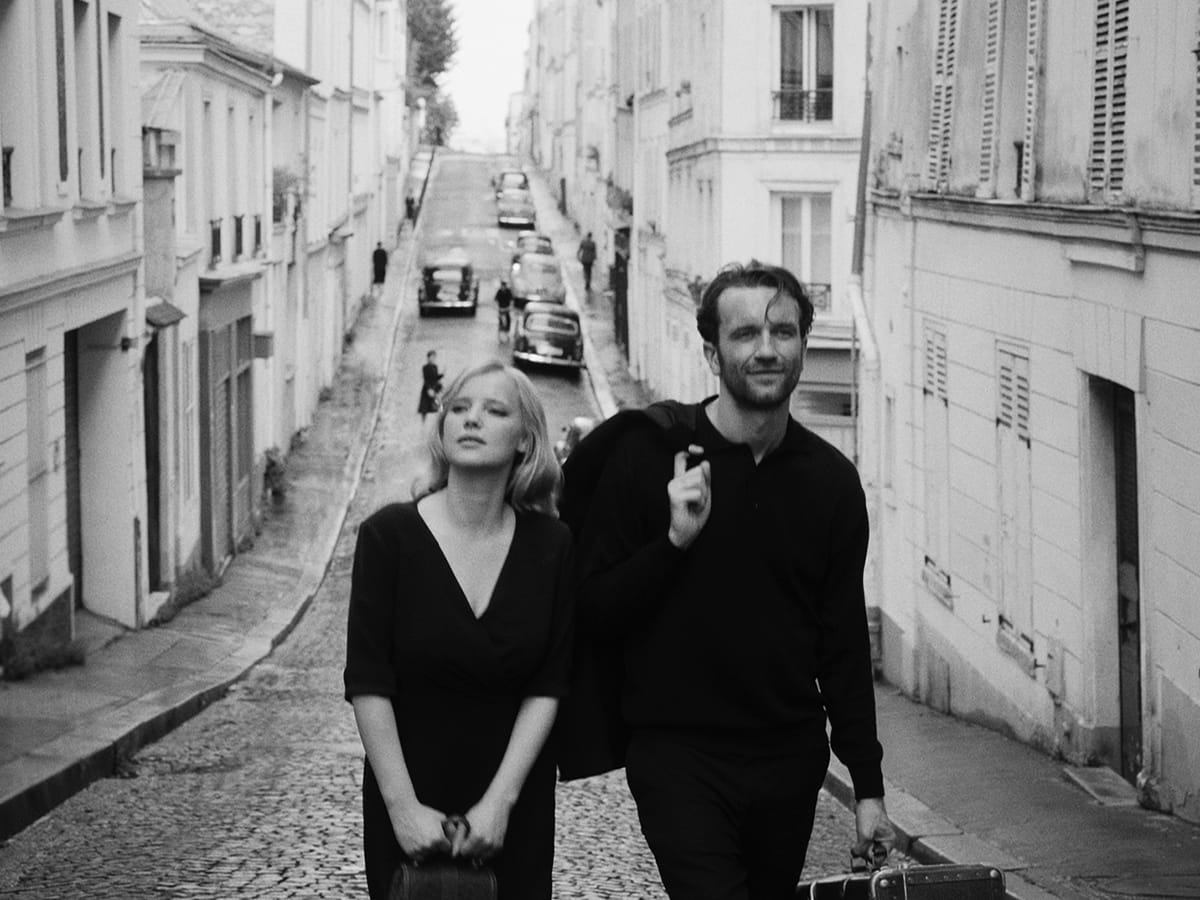
Also Read: Pawel Pawlikowski’s Top 10 Films of All Time
She embodies a kind of transnational feminism that the film never names but constantly performs, a restlessness that exposes how “home”, for women, is often just another word for control. So, her displacement becomes self-willed, and her migration an act of defiance against containment. Yet even in that, there is tragedy: every geography she traverses writes her out of itself. Zula’s journey, then, is not toward a destination but toward disappearance. Her body becomes Europe’s invisible border – crossed, redrawn, remembered, and forgotten, marking the intersection of gender and geography where love, like nationhood, is always already a story of exile.
What if Zula was never real? What if “Cold War” is not a love story between two people, but the slow, obsessive unfolding of a man’s memory and his desperate attempt to construct meaning from absence? Beneath its surface of star-crossed romance, Paweł Pawlikowski’s film operates like a hallucination of love, one authored by Wiktor’s nostalgia rather than by Zula’s presence. The film’s structure feels elliptical and dreamlike, more like a memory unfolding than a sequence of events, as if time itself bends to soften what was lost. The jumps between years and countries happen without transition, as though the narrative were being edited inside Wiktor’s head; Zula flickers in and out of existence like an image trying to stabilise on worn celluloid.
This instability is the grammar of male authorship, where Wiktor’s gaze invents her. Zula becomes his archive, his screen of projection, his cinematic muse, “filmic desire personified”. She appears precisely when he remembers her and disappears when his memory falters. In this sense, “Cold War” participates in a lineage of European art cinema, from “Vertigo” to “La Jetée,” where the woman functions as the vessel of a man’s melancholia, the emblem of a loss he can never articulate but must keep reanimating through art.
Pawlikowski, too, stages Zula as a spectral composition of sound and image. Her songs carry the weight of nostalgia long before the narrative grants them meaning. Her face, lit in a chiaroscuro, feels less like a body than a projection on a cracked screen. Even the love scenes operate like memory sequences, fleeting, elliptical, untethered from realism, suggesting that Wiktor’s love has become indistinguishable from his remembering. The masculine impulse to memorialise transforms Zula into a cinematic ghost, desired because she is unreachable, idealized because she cannot exist beyond recollection. Every time he sees her, it’s as if he is watching an old film reel of his own life, trying to correct the exposure. Their love, therefore, is not lived but edited, composed through fragments of what once was or could have been.
Pawlikowski’s decision to drain the film of colour amplifies this condition. The monochrome aesthetic does more than evoke period realism. It reflects the grayscale of memory itself. Zula’s volatility — her sudden departures, her contradictions, her flashes of rage — may not be flaws at all. They feel like ruptures within Wiktor’s narration, the cracks through which his authorship bleeds. She resists narrative coherence because she was never granted interiority to begin with. We never truly hear Zula’s story. We only hear Wiktor’s version of it, shaped by longing, guilt, and the aesthetics of loss. Even when Zula sings, her voice seems ventriloquised by his memory, the same folk tune reappearing in altered forms, as though time itself were looping around a single desire.
So, “Cold War” transforms itself into masculine nostalgia masquerading as romance. Wiktor’s obsession with Zula mirrors the artist’s obsession with the muse, the belief that love can be preserved through representation, that desire can be redeemed by art. Yet this act of preservation is also one of erasure. By turning her into an image, he annihilates her subjectivity. Zula becomes an idea, a mirage reconstructed by memory’s selective lighting. Her unpredictability is the residue of what cannot be remembered, the remainder of a life lived beyond male authorship.
Pawlikowski subtly undercuts this illusion through the film’s recurring motif of performance: every stage, every song, every dance re-enacts the act of remembering. The stage becomes the site where Wiktor’s fantasy of Zula is rehearsed, but also where it unravels. By the final act, their reunion feels less like redemption and more like repetition, the loop closing on itself. They kneel before the altar as characters exhausted by memory, consumed by the very myth they sustained. As they leave the frame and step into the blank expanse, death no longer feels like an ending. They slip into disappearance, into that fragile place where nostalgia turns image and memory into one. In that moment, Zula ceases to be a woman and becomes what she always was: cinema’s most enduring illusion, the one who is loved because she was never real.
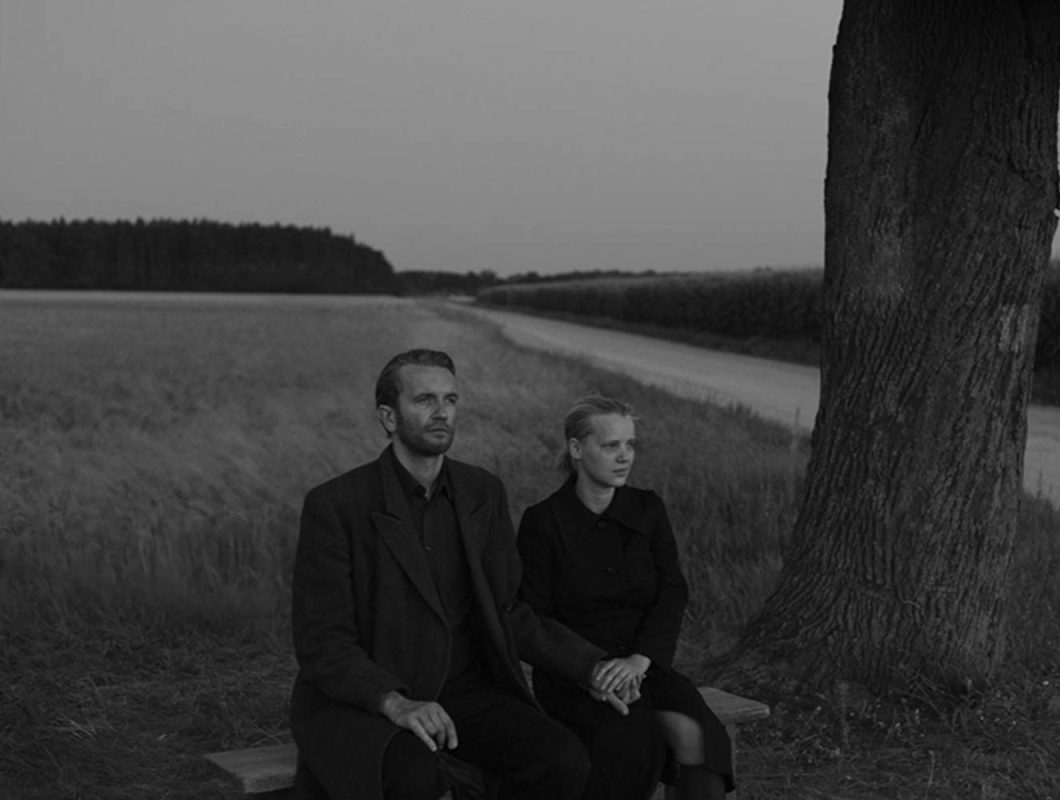
More Read: 10 Greatest ‘Best International Feature Oscar’ Winners from the 21st Century
Zula, to me, is less a woman and more a haunting. It’s an idea that Europe dreams about when it cannot bear to remember itself. She drifts across languages, borders, and lovers with the same weightless inevitability that a nation carries its scars. “Cold War” never gives her a home because the film itself is homeless, caught between history and hallucination. Pawlikowski offers her a surface to be projected upon, a map onto which memory, masculinity, and politics simultaneously write and erase themselves.
To me, Zula’s body functions as both the geography of post-war Europe and the mirage of Wiktor’s nostalgia. She is the continent as imagined by a man – fragmented, beautiful, irretrievable. With every crossing of borders, her sense of identity is redrawn, shaped, and reshaped by the memories of those who try to hold on to her. When Wiktor looks at her, he doesn’t see Zula. He sees the version of her that his longing has already edited. And that’s where the film’s genius lies. It performs the act of cinematic authorship as a kind of colonisation. The camera, like history, refuses her subjectivity even as it obsesses over her surface. The monochrome palette becomes less an aesthetic choice than an ethical one. It flattens her into nostalgia, turning her volatility into evidence of male remembering.
The world of “Cold War” drifts in a loop of remembrance, where the past keeps folding into the present. Zula becomes what survives that loop, the echo that lingers after its cause is outlived. She is both real and unreal, the only character who exists outside the logic of realism because she was never granted one. In her wandering, I see the double displacement of women in cinema: first, from history itself, and then from the narratives that claim to recover them. Yet Pawlikowski’s film, perhaps unknowingly, lets that fracture speak. The moments when Zula slips out of Wiktor’s gaze, when she laughs, storms out, sings off-beat, are the film’s only glimpses of truth, cracks where her spectral presence leaks into the real.
Through her, “Cold War” becomes an allegory for the instability of both nation and narrative: how memory edits women the way politics edits maps. By the end, when Zula and Wiktor kneel before the altar, I don’t see a love fulfilled but an illusion exhausted, the male fantasy of permanence finally dissolving into the blur of its own creation. She was never meant to stay. And that, to me, is Pawlikowski’s quiet revelation, that, in a world built by men and remembered by men, sometimes a woman’s most radical act is to vanish.
Zula’s disappearance, then, is a gesture that exposes the politics of cinematic authorship itself. European art cinema has long been preoccupied with memory, exile, and the failure of language, yet within that tradition, women often appear not as symptoms of history. Pawlikowski inherits the lineage of Bergman, Antonioni, but also fractures it. In “Cold War,” the woman as memory refuses to remain only symbolic. Zula destabilises the very image that seeks to fixate her. Her volatility becomes a critique of authorship, and her restlessness is not chaos but resistance. The film thus turns inward on its own act of creation, revealing how the aesthetic of nostalgia can also be a mechanism of control.
We see the film thus perform a double movement: it seduces us with the beauty of longing while quietly indicting the gaze that produces it. In Zula’s refusal to be contained, there is something radical. She reclaims the right to opacity, to unknowability, to being more than the sum of what men recall. She stands in a continuum of European female figures: Agnès Varda’s Cleo, Kieslowski’s Julie, and Krzysztof Zanussi’s displaced heroines, who all expose the fragile line between authorship and objectification, between remembrance and erasure.
Through Zula, Pawlikowski interrogates cinema’s own architecture of desire, its need to translate women into metaphors. “Cold War” becomes, finally, a film about the impossibility of representing the feminine without consuming it, a warning that every frame of beauty risks becoming a mausoleum. And yet, it is precisely in that contradiction, in the failure to possess her, that Zula’s ghost attains her most subversive power. She endures as the one who escapes both.




